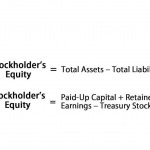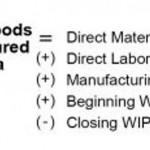Bookkeeping Adjusting Entries, Reversing Entries
- Danh mục: Bookkeeping
If the estimated amount is $18,000 the retailer will debit Temp Service Expense for $18,000 and will credit Accrued Expenses Payable for $18,000. This adjusting entry assures that the retailer’s income statement for the period ended December 31 will report the $18,000 expense and its balance sheet as of December 31 will report the $18,000 liability. Making the reversing entry at the beginning of the period just allows the accountant to forget about the adjusting journal entries made in the prior year and go on accounting for the current year like normal. To avoid the need for a compound entry, Mr. Green may choose to reverse the April 30 adjustment for accrued wages when the May accounting period begins. The reversing entry decreases (debits) wages payable for $80 and decreases (credits) wages expense for $80.
If accountants using reversing entry, they should record two transactions. Payroll expense is the operating expense that should record in the month of occurrence. If we do not record, we will understate operating expenses and liability (amount owed to staff). We can use the best estimation, which is the amount from the prior month if we don’t expect any changes. The variance between accrue and actual expense will adjust to the profit and loss account in next period. Under the accrual method of accounting, any payments for future expenses must be deferred to an asset account until the expenses are used up or have expired.
Accounting with the reversing entry:
And subsequently, they just record transactions normally, it prevents any confusion regarding double booking. This accrual-type adjusting entry was needed so that the December repairs would be reported as 1) part of the expenses on the December income statement, and 2) a liability on the December 31 balance sheet. An adjusting entry was made to record $2,000 of accrued salaries at the end of 20X3. The next payday occurred on January 15, 20X4, when $5,000 was paid to employees.
- Reversal entries will significantly make life of a bookkeeper easier since he won’t have to remember which expenses and revenues were accrued and prepaid.
- Prior to issuing its December financial statements, Servco must determine how much of the $4,000 has been earned as of December 31.
- For example if Company X wanted to make an adjustment for $600 in unpaid wages, it would debit that amount from the wages expense account and credit it to the wages payable account.
- Reversing entries work to clear out any accruals that you do not want reflected in the new accounting period.
- NeatNick’s balance sheet at the end of the month will show that the company owes the employees $2,200, which we will pay on December 10.
Hence, office equipment with a useful life of 5 years and no salvage value will mean monthly depreciation expense of 1/60 of the equipment’s cost. A building with a useful life of 25 years and no salvage value will result in a monthly depreciation expense of 1/300 of the building’s cost. On March 31, you recorded a $2,000 revenue journal entry for a client whose work you completed but haven’t yet billed. You recorded it late at night and didn’t immediately tell your spouse because you have a rule about not talking about work past 6 p.m.
Example of Adjusting Entries and Journal Entry
For example, on the first payday following the reversing entry, a “normal” journal entry can be made to record the full amount of salaries paid as expense. This eliminates the need to give special consideration to the impact of any prior adjusting entry. Suppose Mr. Green makes an adjusting entry at the end of April to account for $80 in unpaid wages. This adjustment involves an $80 debit to the wages expense account and an $80 credit to the wages payable account. For example if Company X wanted to make an adjustment for $600 in unpaid wages, it would debit that amount from the wages expense account and credit it to the wages payable account.
Why adjusting entries are needed
As a result, the account Temp Service Expense will begin January with a zero balance. With the reversing entry, the January 10 entry credits the interest revenue directly. Without the reversing entry, the credit on January 10 would be to the Interest Receivable account instead of the Interest Revenue account.
The goal of the reversing entry is to ensure that an expense or revenue is recorded in the proper period. If the loan is issued on the sixteenth of month A with interest payable on the fifteenth of the next month (month B), each month should reflect only a portion of the interest expense. To get the expense correct in the general ledger, an adjusting entry is made at the end of the month A for half of the interest expense. This adjusting entry records months A’s portion of the interest expense with a journal entry that debits interest expense and credits interest payable. At the beginning of the month B that expense is reversed via a reversing entry. When the full amount of the interest is paid in month B, each month’s books will show the proper allocation of the interest expense.
If $3,000 has been earned, the Service Revenues account must include $3,000. The remaining $1,000 that has not been earned will be deferred to the following accounting period. The deferral will be evidenced by a credit of $1,000 in a liability account such as Deferred Revenues or Unearned Revenues. Under the accrual method of accounting, the amounts received in advance of being earned must be deferred to a liability account until they are earned.
Company
It can lead to miscalculations of your overall financial situation concerning assets and liabilities and lead you to make decisions based on faulty data. Reversing entries can help you manage your accounting records more efficiently. One downside is how easy it is to forget about reversing entries at the beginning of the month. Tie a ribbon around your finger or put a note on your calendar to remind yourself to record reversing entries. Without the reversing entry, you risk accidentally recording payroll expenses twice — once at the end of the first month and again on payday.
We also have an accompanying spreadsheet that shows you an example of each step. And, as we’ve seen in many Hollywood films, bad things happen when you try to mess with the past. Shaun Conrad is a Certified Public Accountant and equity method of accounting asc for investments and joint ventures CPA exam expert with a passion for teaching. After almost a decade of experience in public accounting, he created MyAccountingCourse.com to help people learn accounting & finance, pass the CPA exam, and start their career.
A reversing entry is a journal entry made in an accounting period, which reverses selected entries made in the immediately preceding period. The reversing entry typically occurs at the beginning of an accounting period. It is commonly used in situations when either revenue or expenses were accrued in the preceding period, and the accountant does not want the accruals to remain in the accounting system for another period. If the bookkeeper does not record these reversal entries, then he would have to remember which portion of the current expenses, for example, has already been paid out in the previous period. Therefore, there is a high chance of double-counting certain revenues and expenses. The practice of making reversal entries at the beginning of the accounting cycle will ensure that this error of double counting is avoided.
Reversing Entries
Accounting entries, reversing entries included, of course, are really important because they’re key in keeping your financial situation up to date. Some accounting software will allow you to indicate the adjusting entries you would like to have reversed automatically in the next accounting period. When the bill is actually paid in January, the bookkeeper must remember that the expense was already recorded in December. The current entry would be to debit the accrual expense account and debit cash.
You can make transposition errors and other mistakes go away with a reversing entry. Reversing entries are a type of journal entry, which is how businesses record transactions. That’s why it’s an accounting faux pas to delete transactions in your accounting software. Business owners should familiarize themselves with reversing entries, which can clear previously recorded transactions without erasing any financial data. If Paul does not reverse last year’s accrual, he must keep track of the adjusting journal entry when it comes time to make his payments. Since half of the wages were expensed in December, Paul should only expense half of them in January.
Reversing entries are used in accrual accounting, where revenue and expenses are recorded when earned and incurred and not only when cash is involved. Reversing entries make it easier to record subsequent transactions by eliminating the need for certain compound entries. To illustrate reversing entries, let’s assume that a retailer uses a temporary employment agency service to provide workers from December 15 to December 29. The temp agency will bill the retailer on January 6 and the retailer is required to pay the invoice by January 10. Assuming the retailer’s accounting year ends on December 31, the retailer will make an accrual adjusting entry on December 31 for the estimated amount.


























